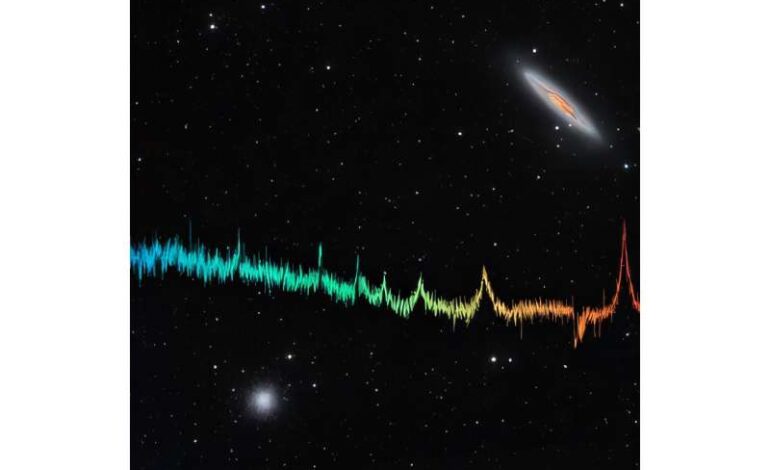4MOST Telescope Achieves First Light, Paving Way for Astronomy Breakthroughs

On October 18, 2025, the 4-meter Multi-Object Spectroscopic Telescope (4MOST) at the European Southern Observatory’s (ESO) Paranal Observatory in Chile achieved a significant milestone by capturing its first light. This moment marks the beginning of its scientific mission, as the facility prepares to embark on extensive astronomical research.
4MOST is not just designed to take images of the sky; it records spectra, allowing astronomers to analyze the light from 2,400 celestial objects at once, breaking it down into 18,000 color components. This capability enables detailed studies of the chemical compositions and properties of these objects, significantly enhancing our understanding of the cosmos. Once fully operational, 4MOST will investigate the formation and evolution of stars and planets, the Milky Way, black holes, and the universe itself.
The telescope’s unique design combines a large field of view with the ability to observe multiple objects simultaneously. Development of 4MOST began in 2010, and it is expected to operate for at least the next 15 years. The Leibniz Institute for Astrophysics Potsdam (AIP) leads the consortium that constructed and will operate the facility, overseeing various aspects, including the advanced wide field camera and fiber systems.
Roelof de Jong, Principal Investigator and Milky Way section head at AIP, expressed his excitement about the first spectra captured. He stated, “It is incredible to see the first spectra from our new instrument. The data looks fantastic from the start and bodes well for all the different science projects we want to execute.” He noted the remarkable achievement of capturing light that has traveled billions of years into fibers as thin as human hair.
Adding to the enthusiasm, Joar Brynnel, Project Manager of 4MOST, emphasized the significance of this milestone after over a decade of work. “It is hard to put into words the excitement of realizing that the facility not only meets but exceeds the required performance,” he said. Brynnel highlighted the dedication of the team, which made delivering 4MOST in excellent condition a reality.
The first observations exemplify the telescope’s capabilities, with one of the focal points being the galaxy NGC 253, also known as the Sculptor or Silver Coin galaxy. This galaxy, discovered by Caroline Herschel in 1783, is located approximately 11.5 million light years away and is currently experiencing significant star formation. 4MOST’s observations also included a super star cluster and various star types within NGC 253, showcasing its ability to capture a diverse array of celestial phenomena.
In addition to NGC 253, 4MOST collected spectra from over 2,000 other objects in a single 20-minute observation, encompassing both bright and faint stars in the Milky Way. This data will enable scientists to determine key characteristics such as temperature, mass, and chemical composition. The telescope’s reach extends beyond our galaxy, gathering information from galaxies located up to 10 billion light years away.
The 4MOST science team comprises more than 700 investigators from various universities and research institutions worldwide. Over its first five years, the facility will run 25 distinct science programs aimed at tackling fundamental questions about the universe. The multi-fiber design of 4MOST allows for simultaneous observations, enabling concurrent studies of rare celestial objects and more extensive statistical samples.
Noteworthy scientific objectives include investigating the origins of chemical elements, the evolution of the Milky Way, galaxy formation, and the nature of dark matter and dark energy. As the telescope begins its scientific journey, it promises to contribute significantly to our understanding of the universe’s structure and evolution.
The optical fibers at the heart of 4MOST, each as thin as a human hair, transport light to three spectrographs that analyze it in detail. A nearly 1-meter-diameter optical camera installed in the VISTA telescope provides a field of view of 2.5 degrees, significantly larger than the moon. This allows 4MOST to observe new sets of objects every 10 to 20 minutes, with fiber positioners ensuring swift adjustments to target new celestial bodies.
Data collected will be analyzed at the University of Cambridge and subsequently archived at AIP and ESO, making it accessible for scientific exploration. The successful initiation of 4MOST marks a new era in astronomical research, and the global scientific community eagerly anticipates the discoveries that lie ahead.






